1/9/2010
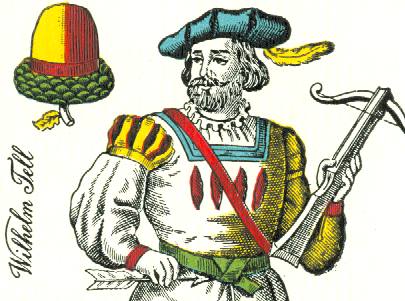 |
A TALE TO..............TELL |
|
The decks
in this exposition here are known among collectors in the Netherlands as
Wilhelm Tell cards or Four Seasons cards. But in Hungary they are proud
to call them "Magyar Kártya" or Hungarian cards. And
apparently that's rightly so.
The
pattern was designed and first produced by Jószef Schneider from Pest 1837. These cards are still
popular in Hungary, but until today they have been manufactured and sold in
Austria, the Czech Republic and Germany too. So it may be considered a
standard pattern.
And just like in any standard pattern, variations
and even "anomalies" can be found too. |
We will start by
showing you a regular standard deck of Hungarian cards, as they are sold up to
this day in Hungary. The pattern uses the German suits and ranks. For those who
are not familiar with them: the German suits are Hearts, Acorns, Bells and
Leaves and the ranks are King, Ober (Over) and Unter (Under). In decks without
indices the Ober and Unter
can be distinguished by the place of the suit sign. When it's on the top, it's
an Ober and when it's at the bottom of the design, it's an Unter. There's no
regular ace in the decks, but a Dauss, which is actually a 2. In this pattern
that card is illustrated with a scene, depicting one of the seasons. Hence the
nickname of Four Seasons Cards. The decks can be found as 32 cards decks or 36
cards deck. The pips are numbered X - VII (10 - 7) in a 32 card deck. In a 36
card deck the VI (6) is added to each suit. The VI of Bells is called "Weli"
and used as a joker in certain games.
The figures on
the court cards have names, which refer to figures from Schiller's drama about
Wilhelm (William) Tell, the legendary Swiss freedom fighter. In this pattern
Tell himself is always depicted on the Ober of Acorns. The other names seem to
be related to a certain card too, but there are differences. Other manufacturers
may give a different name to a certain card, while the design of the figure
remains the same as in the original pattern. But always the names belong to
characters from the Wilhelm Tell saga.
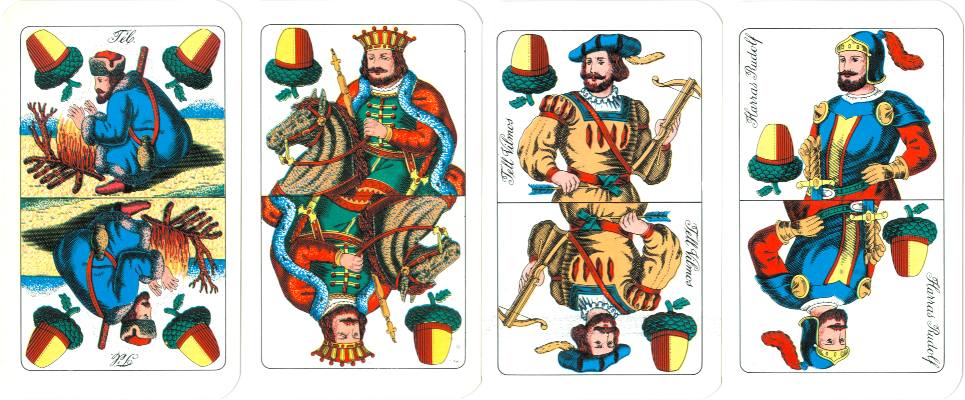
In the Hungarian
language the four seasons are called: Téb (winter), Tavanz (spring), Nyar
(summer) and Osz (fall).
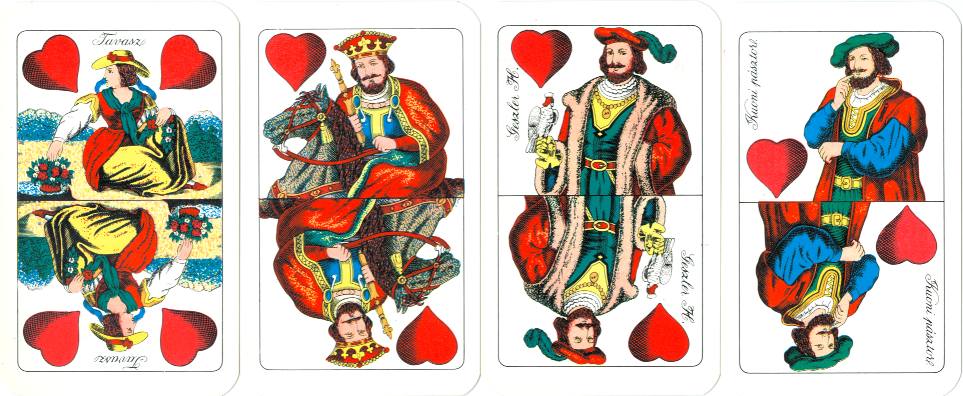
There are a few
distinguishing features of the Kings. They are all on a horse, wear a crown and have no
name. They hold a scepter only and no other regalia. The absence of a name may
be explained by the fact that there was no king in Schiller's Wilhelm Tell
drama.
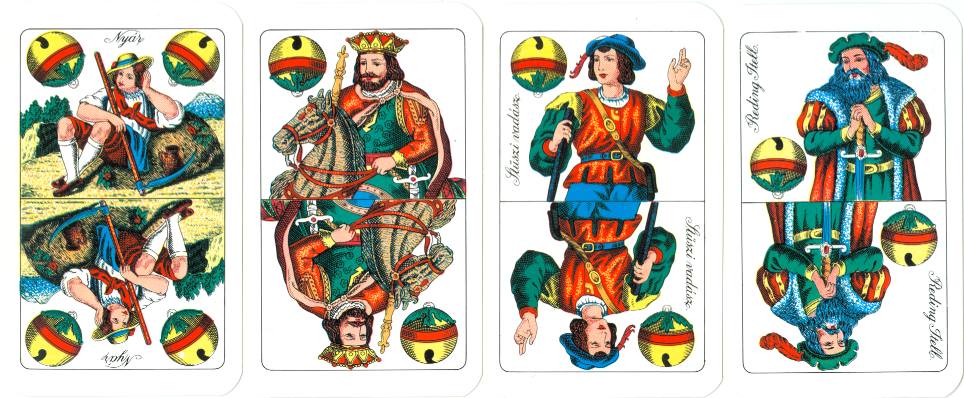
In the Hungarian
cards the Obers represent Tell Wilmos (Acorns), Gesler H. (Hearts), Stüszi vadasz
(Bells) and Rudenz Ulrich (Leaves).
The Unters depict Harras
Rudolf (Acorns), Kuoni pasztor (Hearts), Reding Itell (Bells) and Fürst Walter
(Leaves).
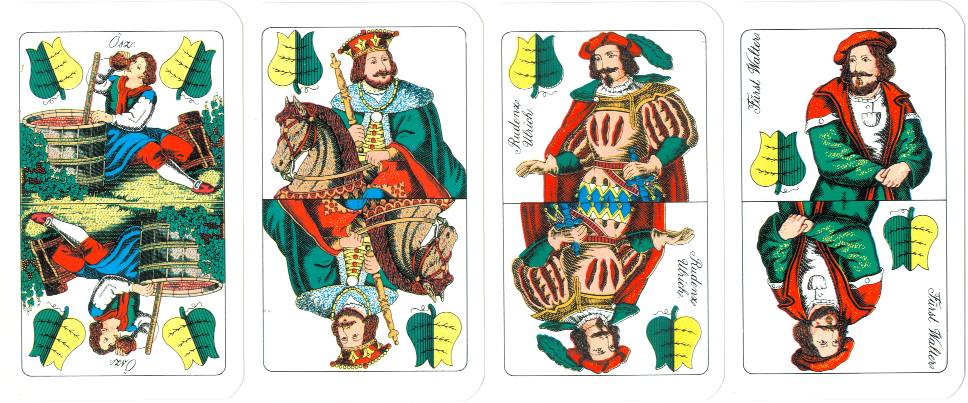
It's obvious, that
the names first give the family name and then the first name. It's probably the
Hungarian way of name giving. In other countries manufacturers have stated the names with the first name first. In this Hungarian deck we find the name of
Stuszi vadasz (Ober of Bells) and Kuoni pasztor (Unter on Hearts). The fact that
the second word doesn't begin with a capital, is because that word is not their
family name but reflects their
profession. So it's Stüszi the overseer and Kuoni the shepherd (a citizen of
Uri).
click here
to see the numbercards of this deck.
01
02 03
04 05
XPOHOME




